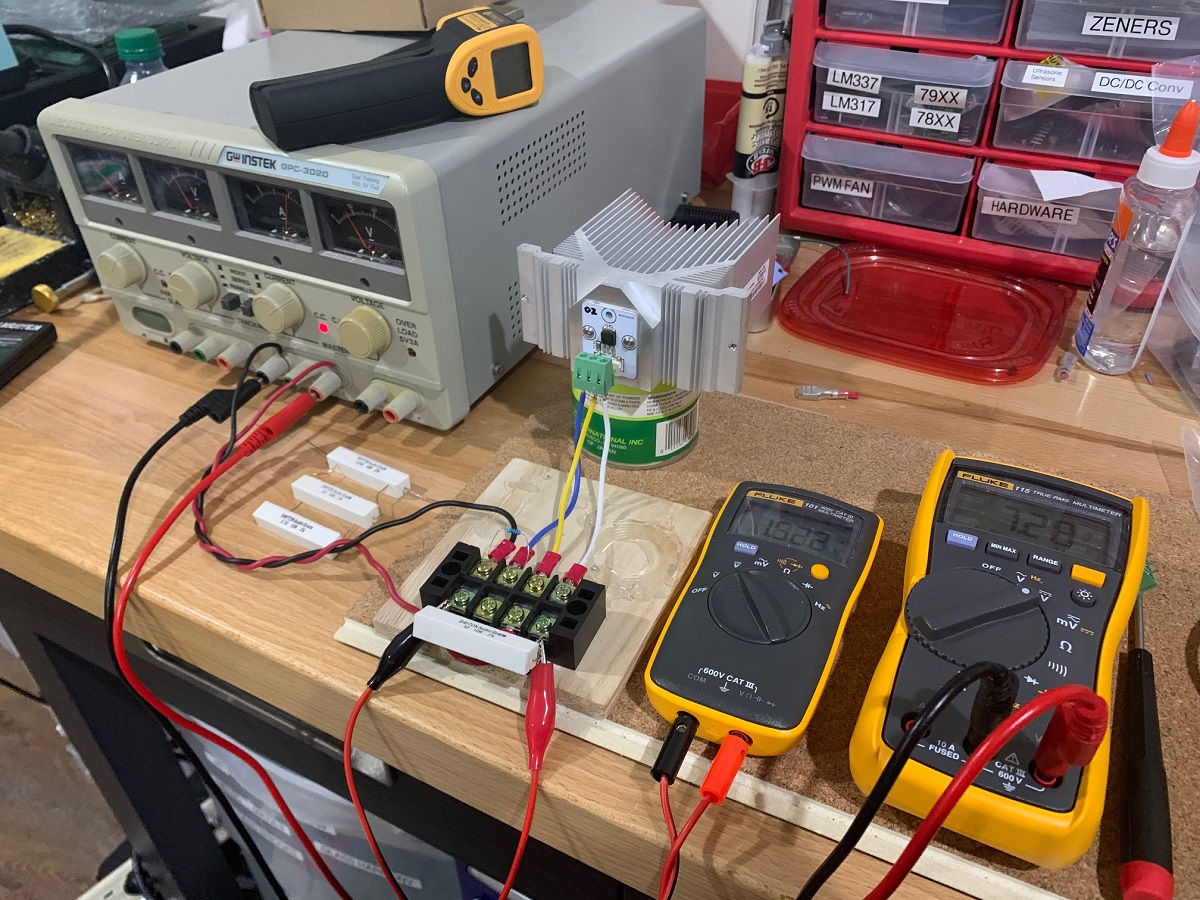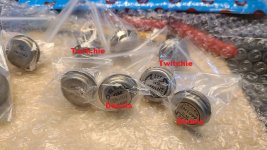There is no 2SK170BL available from reliable sources at TaoBao (Chinese Ebay).
2SK362BL is currently being sold as 2SK170BL replacement.
But it is essentially a 2SK117BL without any noise specs (so inferior).
And they will incurr much higher costs selling on ebay than on TaoBao.
Cheers,
Patrick
2SK362BL is currently being sold as 2SK170BL replacement.
But it is essentially a 2SK117BL without any noise specs (so inferior).
And they will incurr much higher costs selling on ebay than on TaoBao.
Cheers,
Patrick
So they are real?
same seller has 2SK170Bl for 1$.... fake or not?
The LU1014 that I have bought from eBay behave on the curve tracer with triode curves much like 2SK60, 2SJ18, 2SJ20, KP926, 2SK182ES, etc. I have posted these curves in the LU1014 group buy thread.
If they are fakes, they are they only fake triode-behaving semiconductor in existence to my knowledge.
I would expect eBay China sellers to have a mix of genuine and fake parts. I have received refunds for more than one batch of fake eBay China parts. It is incumbent on the buyer to manage that risk.
ZM: How can you parallel the "tiny buggers" without degeneration? Wouldn't there be "current-hogging" issues? The all of the Stasis schematics I have seem show degenerated BJTs in the output stage.
In "art_the_square_law", Nelson said, "FETs of various sorts are less problematic, and for some we can even find operating points where the temperature coefficient is near zero, but it is deep into the Class A region. Tubes are comparatively easy, and are routinely used without degeneration. It's tempting to imagine that this could be factor in their popularity among many audiophiles."
Since the voltages and currents are already pretty low (F3: 2.4v Vds at 1.5A Ids) LuDEF, how much lower would you have to go to get to that zero temperature coefficient operating point, and enjoy the benefits of running them in parallel?
....and would running the LU cells in parallel with degeneration sound noticeably worse?
(Acknowledging that some do hear it. From the "art_the_square_law" again, "...there is some listener preference for FET circuits operated without degeneration. Some listeners can tell the difference and prefer circuits without the resistor." )
(Acknowledging that some do hear it. From the "art_the_square_law" again, "...there is some listener preference for FET circuits operated without degeneration. Some listeners can tell the difference and prefer circuits without the resistor." )
all roads leads to Rome

zero temp coeff. point is not exactly helping in domain of current sharing
zerotc .... is important for situation of part biased with, lets call it that way, static biasing mechanism (voltage source), while in situation of having "active" ("servo") biasing mechanism, zerotc is of no importance ........
issue of paralleling devices stays the same - ideally you need them curve matched
not big deal (if one choose it as that) with small parts and currents (say small signal JFets) but when dealing with speaker level currents, any current discrepancy easily transfers to matter of functionality, not just matter of distortion

how much lower would you have to go to get to that zero temperature coefficient operating point, and enjoy the benefits of running them in parallel?
zero temp coeff. point is not exactly helping in domain of current sharing
zerotc .... is important for situation of part biased with, lets call it that way, static biasing mechanism (voltage source), while in situation of having "active" ("servo") biasing mechanism, zerotc is of no importance ........
issue of paralleling devices stays the same - ideally you need them curve matched
not big deal (if one choose it as that) with small parts and currents (say small signal JFets) but when dealing with speaker level currents, any current discrepancy easily transfers to matter of functionality, not just matter of distortion
Updated Gerber files for TO-247 adapter with no thermal reliefs. Not that the bolt pattern should allow clamping with UMS heatsinks. The aluminum IMS PCB provides thermal transfer, extended legs for underhung PCB mount, and easy mounting as TO-247 or as clamp with lateral bolt holes on UMS heatsink.
The TO-247 adapter (Gerbers freely available in this thread) for the LU1014 has been assembled. Next up is thermal testing.
Thanks, Gary. Woofertester suggested starting with 3.3ohm Source to GND, a 10k Gate to GND and 3v Drain to GND. Monitor voltage across 3.3R power resistor. Monitor temp and slowly decrease R to get bias current to rise to desired point if temps stable.
A friendly suggestion - can we get the posts related to the adapters split off from this thread and possibly the LU1014 GB and merged into it's own thread? I think it's definitely interesting enough to warrant it's own thread and we can keep this one relevant to the LuDEF amp ... if it ever shows up 

 😀
😀


 😀
😀Mounted on heatsink and ready for thermal testing.
Baffles of warp engines from USS Voyager? 😀
Mounted on heatsink and ready for thermal testing.
That is looking sweet. I have the same heatsink that I use for taking measurements.
Thanks, woofertester. Those are great heatsinks. Not only are they inexpensive and practical, they have the highest style points. 🙂
The thermal coupling seems to work very well. Everything was pretty cool running. At 1.5 A bias and 7.3v temp in LU body was about 37C for 8.6W dissipation.

The thermal coupling seems to work very well. Everything was pretty cool running. At 1.5 A bias and 7.3v temp in LU body was about 37C for 8.6W dissipation.
Nice 
Those pads is like having LU1014Ds in a bigger package, easy handling and good thermal transfer

Those pads is like having LU1014Ds in a bigger package, easy handling and good thermal transfer
though, I like more when Amperes are called current, or Iq
bias is, well, voltage ........ commanding Iq or whatever
we know, but confusing for Greenhorns
bias is, well, voltage ........ commanding Iq or whatever
we know, but confusing for Greenhorns
- Home
- Amplifiers
- Pass Labs
- LuDEF


